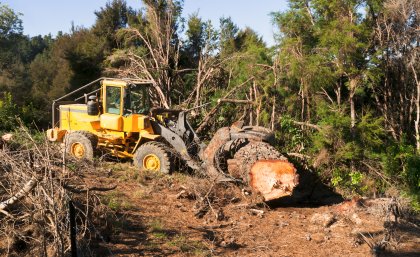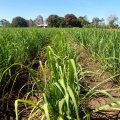
University of Queensland-led research published in Nature has found that nearly three-quarters of the world’s threatened species are in peril because people are converting their habitat into agricultural lands and overharvesting species.
The team from UQ, the Wildlife Conservation Society (WCS) and the International Union for the Conservation of Nature (IUCN) studied information on 8688 species on the IUCN Red List.
PhD student in the School of Geography, Planning and Environmental Management (GPEM) Sean Maxwell said the study found that 72 per cent (6241 species) were overexploited (the harvesting of species from the wild at rates not compensated for by reproduction or regrowth).
The authors also showed that expansion and intensification of agricultural activity was imperilling 5407 (62 per cent) of species they assessed, including Africa’s cheetah and Asia’s hairy-nosed otter.
“For example, the Sumatran rhinoceros, Western gorilla and a scaly mammal, the Chinese pangolin, are all hunted illegally for high market demand for their body parts and meat,” Mr Maxwell said.
“In comparison, 19 per cent of species are considered threatened by climate change.
“We are concerned that efforts to address climate change could overshadow more immediate priorities for the survival of the world’s flora and fauna.
“Addressing overharvesting and agricultural activities are key to turning around the biodiversity extinction crisis.
“This must be at the forefront of the conservation agenda.”
Study co-author Associate Professor James Watson of WCS and UQ GPEM said, “History has taught us that minimising impacts from overharvesting and agriculture require a variety of conservation actions but these can be achieved.
“Actions such as well managed protected areas, enforcement of hunting regulations, and managing agricultural systems in ways that allow threatened species to persist within them all have a major role to play in reducing the biodiversity crisis.
“These activities need to be well funded and prioritised in areas that will reduce threat.”
Study authors also include Associate Professor Richard Fuller of UQ’s School of Biological Sciences and Dr Thomas Brooks of the IUCN.
Next month, representatives from government, industry and non-government organisations will define future directions for conservation at the World Conservation Congress of the IUCN in Hawaii.
Media: Sean Maxwell smaxwell@uq.edu.au, 0403 477 098; James Watson jwatson@wcs.org, +61 3346 1645.











